Anyone familiar with the history of Grand Central Terminal (and hopefully all of you that regularly read this blog) likely recall a 1902 train crash that led to significant changes in how New Yorkers viewed trains. Nobody really liked steam trains operating through the city, and attempts to hide them in cuts and tunnels proved to be unsafe. That particularly serious crash in the Park Avenue Tunnel led to steam trains being banned in Manhattan. The idea of electric trains had been pondered for a while, but this proved the necessary impetus for innovation. The New York Central’s Chief Engineer William Wilgus, and inventor Frank Sprague came up with the bottom contact third rail to power trains into the city, allowing a bold new Grand Central that could never have been accomplished with the previous technology. The often overlooked question, however, is where did that electricity come from? Let’s rewind back a few years to the beginning of the Grand Central project…
At the heart of the Grand Central Project was not just a station, but an entire set of buildings – A Terminal City. Minnesota architects Charles Reed and Allen Stem won the New York Central’s commission for designing the new Grand Central Terminal, with the assistance of Reed’s brother-in-law, William Wilgus. Later added to the project by the Vanderbilt family were cousin Whitney Warren and his partner Charles Wetmore. The four collaborated on the Terminal itself, as well as the redesigned Grand Central Palace. Other buildings associated with the project were divided between the two firms – the hotels and New York Central Building went to Warren and Wetmore. Though not the most important architecturally, the two most important buildings of all were designed by Reed & Stem – the power stations that powered these new electric trains.
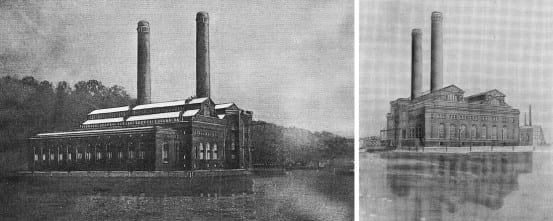
1905 sketches of the Yonkers (Glenwood) Power station (left) and Port Morris power station (right).
Two power stations were constructed by the New York Central in 1906 – one on the Harlem Division at Port Morris (the Harlem had a short branch to Port Morris at the time), and another in the Glenwood section of Yonkers on the Hudson Division. The architecture of both, as designed by Reed and Stem, was relatively simple with brick and terra cotta on the outside. Long, arched windows provided natural light during the day, and an attractive glow along the water at night. Under that simple exterior lay an extensive framework of steel (2800 tons of steel in total), with concrete flooring, brick and tile walls, and concrete roofing slabs covered with copper. Each plant consisted of two buildings – a main building that enclosed a boiler room, coal bunker, and generating room which was 167′ wide, 237′ long, and 105′ high, and a separate swich house located about 40′ away from the main building.
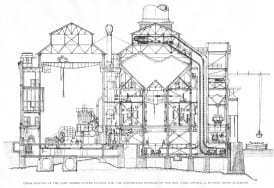
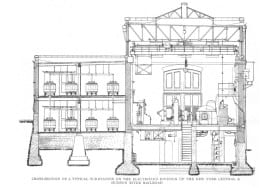
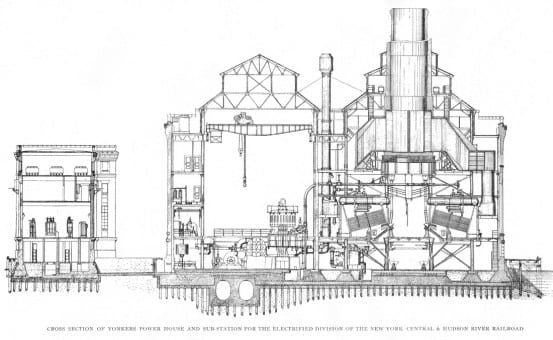
1905 plans for the Yonkers and Port Morris power stations, as well as a typical substation.
Both power stations were cross-connected, and each had an ultimate capacity of 30,000 kw. Just as Grand Central was designed to handle more traffic than the railroad was currently operating, the power stations were designed to carry train service much greater than what was being operated at the time with steam locomotives. Powered by coal, the plants were both designed to receive coal by rail or by boat, which was then delivered by conveyors to a crusher. After the coal was crushed to the necessary size, it was delivered by another conveyor to a coal bunker with a 3500 ton capacity at the top of the building. Each plant had 24 Babcock and Wilcox water tube boilers, and was designed to accommodate 6 5000kw Curtis vertical turbo-generators. The high voltage AC electricity provided by these power plants was delivered to various substations along the Harlem and Hudson Divisions through insulated cables, where it was then converted to lower voltage DC power for the third rail to power trains.
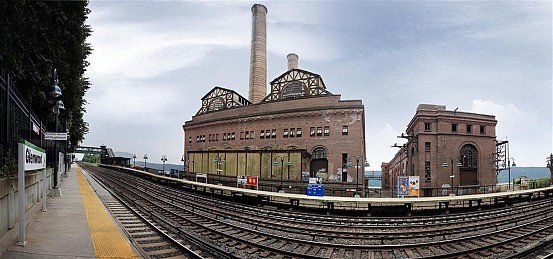 Â
 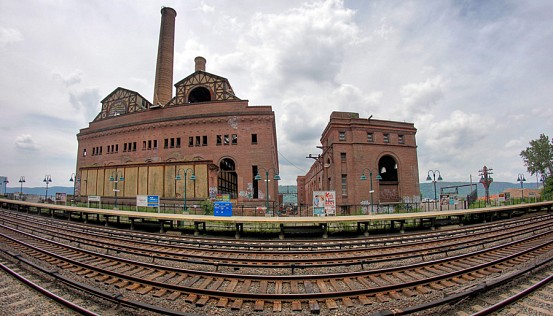 Â
 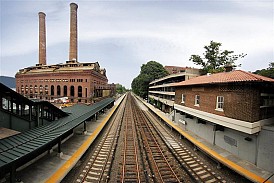 Â
 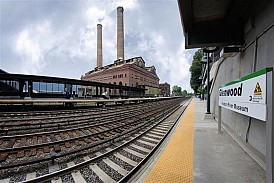 Â
 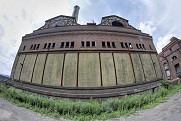 Â
 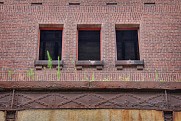 Â
 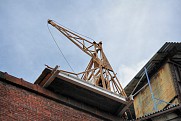 Â
 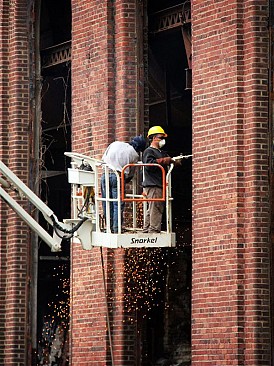 Â
 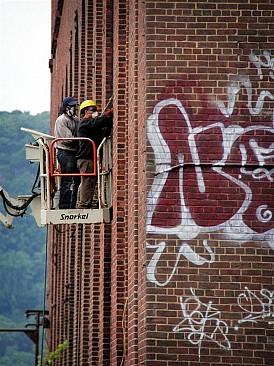 Â
 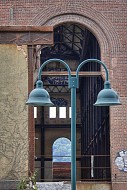 Â
  Â
 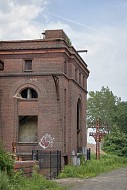 Â
  Â
  Â
  Â
  Â
 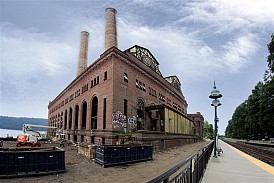 Â
 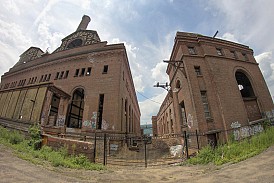 Â
  Â
 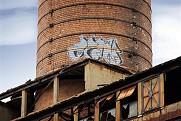 Â
  Â
 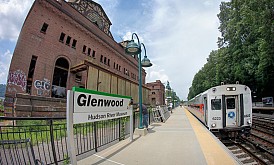 Â
 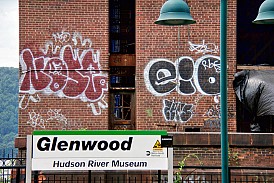 Â
 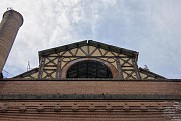 Â
 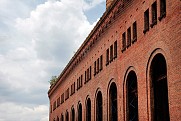 Â
 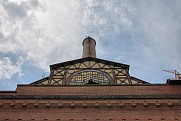 Â
 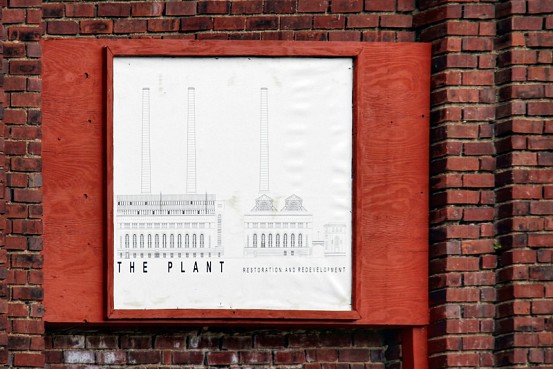 Â
 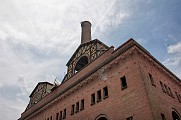 Â
  Â
 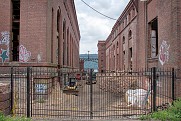
The power station today, after being abandoned for decades.
Though integral to the initial operations of Grand Central Terminal, the New York Central eventually realized that it would be cheaper to purchase energy as opposed to generating its own, and the Glenwood plant was sold to Con Edison in 1936. By the late ’60s the obsolete plant was shuttered and remained abandoned for decades… until fairly recently. A bold plan to restore and repurpose the old power station has been on the table for a few years, but seems to be moving forward thanks to the assistance of New York politicians.
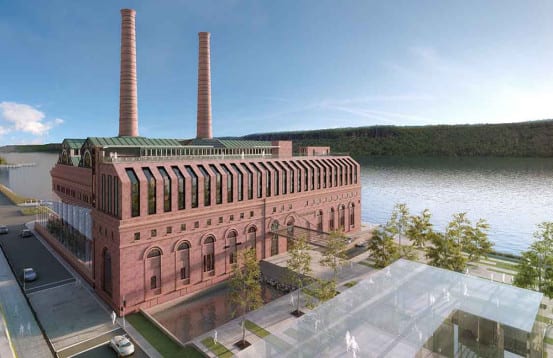
Rendering of how the redeveloped power station would look.
“The Plant” project looks to turn the crumbling power station into a hotel and a convention center, with a capacity of 1600 and 3500 people, respectively. The space is separated into four distinct parts – the Smokestack Building, the Great Turbine Hall, a courtyard, and the Switch House Building – all of which will be connected internally with a new corridor. The smokestack building would contain a reception area, and cafe on the ground floor, and a hotel on the upper floors. Not only will the smokestacks be preserved, plans call for meeting rooms to be constructed inside the 15’6″-diameter stacks.
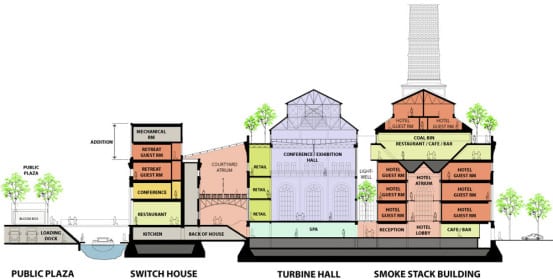
Compare the original plans above with the plans for the future…
A large convention center and exhibition space is planned for the Great Turbine Hall, upper floors may contain retail shops, and the building may also include a spa. The last building to be converted, the Switch House Building, will be converted into a corporate retreat with a hotel, ballroom, restaurant and cafe. This building would see the most changes from the original, as two stories would be added to the building for additional hotel space. The last section of the project would be the Courtyard, currently an open space between the buildings. This open air area would be enclosed with a glass roof and would contain a restaurant or cafe, and a seasonal garden.
All of the aforementioned buildings would be connected to the Metro-North station at Glenwood via a new pedestrian bridge over the railroad tracks.
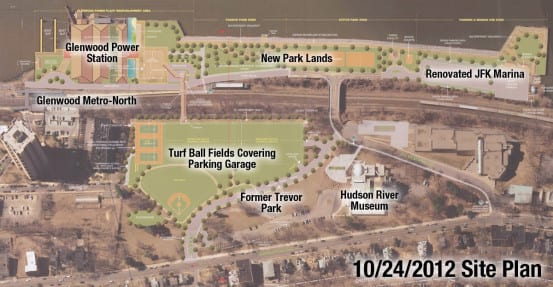
Plans for development around the old Glenwood power station
While there will always be people opposed to development in their neighborhood, the plans for restoring and repurposing the old power station were generally well received. Unfortunately, the area surrounding the site contains no space for parking, and project planners had their eyes on portions of nearby Trevor Park to fit that need, which was not well received by locals. Original plans called for a partially underground parking structure under the current Trevor Park, with artificial turf ball fields to be constructed above. After comments from the public, alternate possibilities have been suggested.
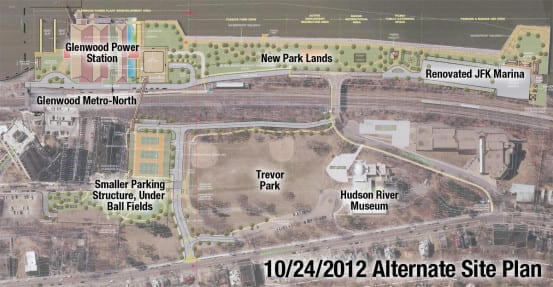
Alternate plan for development around the old Glenwood power station
Either way, the city council unanimously decided at the end of April to request the New York State Legislature to authorize construction on former park lands for the project to move forward. The one caveat being that all parkland being used by the project must be replaced and improved in equal or greater acreage in alternate spots. This alternate parkland would be closer to the waterfront, and the development plans calls for sand volleyball courts, a bocce court, and a picnic and grilling area. This area would be in addition to the previously mentioned park above the parking garage, which is planned to have three ball fields and a playground.
Video highlighting the restoration and repurposing of the Glenwood Power Station.
I, for one, am very eager to see this beautiful old structure again restored to greatness. Though frequently overlooked, the old power plant played an integral role not only in local rail history, but also in the growth of New York City and its suburbs in Westchester and beyond. It will certainly be interesting watch how this project progresses!


I’d love to see it happen too if only Yonkers politics doesn’t get in the way.
Lots’a luck with Yonkers politics getting out of the way. Dat’s how the politicians survive…
Well it seems that the Yonkers folks voted for it unanimously… I think it is up to the state now to determine if they can take over the park lands and build on it, which most residents don’t seem to keen on. I imagine that if that falls through, the project will get nowhere, as there’s no purpose to build this entire thing and have no parking there whatsoever.
I hear ya but only way this will happen is if the greedy politicians can fill there pockets with money I’m sure they will figure a way . and then the fact that that aint the most best hood around there is lots of crime in that area i think it woukd fail like what happenend in getty square with the water front idea they had there them greedy sons of bitches ruined yonkers . yonkers was nice at one time
Don’t forget the other power plant that was part of terminal city. It was located on the site of the Waldorf-Astoria which replaced it.
There was a power plant, in the bowels of GCT, on the east side (46th St. & Lex?). It went down four levels, even lower than the baggage tunnels and steam tunnels. I was never granted entry.
I’m pretty sure there was one in the city where there was an explosion during the construction of GCT. I have a very old copy of a newspaper article, I’ll have to dig it out. May be the same place you’re mentioning.
Never heard of an ‘explosion’, other than the required blasting for construction. Dat Manhattan Schist and Fordham Gneiss is tough stuff! That I do know! We sent our excavated material and construction debris up to Morrisania yard. Wither it went, I don’t know. Perhaps it is rip-rap along the Hudson.
I believe the facility deep underneath Grand Central was actually a substation to convert AC into DC to power the trains, and it is no longer in use. AC/DC substations once required large mechanical rotary converters while today solid-state units are used.
On the Long Island Rail Road, there are some old substation buildings still standing, in the style that the Pennsylvania Railroad used for its original electrification. One is at Mineola. Another can be seen on the right side on a NJT train as it approaches the Hudson River tunnels near Secaucus.
Many old power stations and substations were built to be attractive dignified structures. There is a virtually abandoned Philadelphia Electric Co. power station in the Port Richmond section of the city that’s awaiting restoration (it’s visible from the Atlantic City train.)
http://www.philly.com/philly/news/philadelphia_casino_license/20131027_Wynn_hopes_to_use_casino_license_as_boost_for_Fishtown.html
One challenge in restoring old power station buildings is that they may contain considerable amounts of PCBs and asbestos, and cleanup is expensive.
Oh, okay, so you must be talking about M42, which is technically a part of Grand Central. I’ve been down there once… people do still work there, and the old machinery is all still there, but it isn’t actually used. While its location is supposed to be “super secret,” there is an old freight elevator across from the police station on the lower level of GCT that goes there.
And yes, I think you’re right about the cleanup issues… the plan for restoration did mention some type of pollution on the site, but it didn’t go into detail.
What’s the status of the Port Morris power plant? Never heard of that one, me. Is the Port Morris Branch, from Morrisania, still in service? The Morrisania yard was a favorite place for NYPDs ‘Finest’ to “cop” a nap, or whatever….
According to the Preservation League of NY State, it was demolished “in the mid-20th century.” I haven’t been able to find an exact date on it. As for the branch, it is abandoned as far as I know, though there may be some tracks still in place in some spots.
Didn’t CSX build a by-pass, from the old Flexi-van Terminal to Port Morris and the Bronx Terminal Market? Maybe you, and the “Fish Eye”, can tour the tunnel from Morrisania, eastward next Hallow’een. That would be, truly, spookey. Bring your Glock! Boo!
Off topic: Baltimore & Ohio Railroad had a barge-serviced terminal around 138th Street and the Harlem River. Just a dinky thingie, with a round freight house and a small Diesel servicing it. Last I remember, it was an export base for old NY taxicabs going to South America and a new life.
New York’s version of Battersea Power Station, a disused generating station in London that has just sat there for the last thirty years, as it was too expensive to maintain and too expensive to tear down, and all sorts of proposals were floated for its reuse. It may be that’s where their inspiration is coming from; Battersea, now that the liens and encumbrances are finally off, and it’s available for redevelopment, are being turned into condos, I believe, with some retail and office space.
Students at Yonkers Middle High School have selected to repurpose this building as part of their ACE(Architecture, Construction, Engineering) project.
http://www.acementor.org/
Their proposal is to turn it into a Family oriented- Educational, Research, recreational center for kids and young adults.
The need of the hour is Yonkers based professionals in the ACE field to mentor/guide our students through the project. This great learning opportunity needs support from professionals in Yonkers.
dcherian@yonkers.ypschools.org
Because the Port Morris station was adjacent to the ROW of the NHRR , a “tie” power circuit linked Port Morris with the Cos Cob Powerhouse. This compelled the NHRR power engineers to operate Cos Cob with 25 cycle power , the Port Morris frequency , instead of a lower frequency with was given serious consideration.